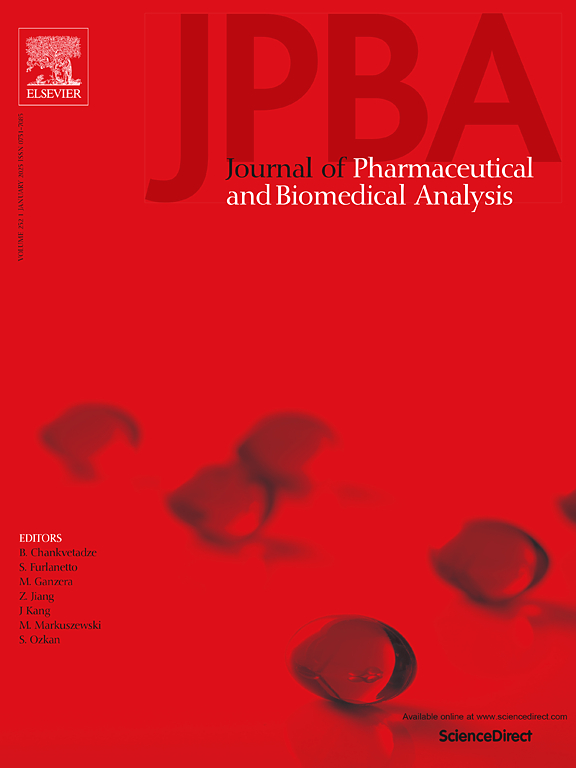Characterization of metabolites of ganoderic acids extract from Ganoderma lucidum in rats using UHPLC–MS/MS
IF 3.1
3区 医学
Q2 CHEMISTRY, ANALYTICAL
Journal of pharmaceutical and biomedical analysis
Pub Date : 2025-02-22
DOI:10.1016/j.jpba.2025.116764
引用次数: 0
Abstract
Ganoderic acids, the primary active compound cluster in Ganoderma lucidum (Chinese name: Lingzhi), one of the most reputed herbal medicines, play a crucial role in its immunomodulatory, anti-inflammatory, and anticancer properties. To reveal the existence forms of this chemical cluster in rat, we characterized the herb-derived compounds following the oral administration of the ganoderic acids extract (GAE). Moreover, we conducted metabolite characterization for both ganoderic acid A (GAA) and ganoderic acid B (GAB) in parallel to explore the metabolic pathways for ganoderic acids. The biological samples, including bile, plasma, urine, and feces, were analyzed by UHPLC–MS/MS. After carefully summarizing the mass fragmentation rules of ganoderic acids, a total of thirteen and eleven were identified after oral administration of GAA and GAB, respectively, through converting MS/MS spectra into chemical structures. Oxidation, reduction, hydroxylation, glucuronidation and sulfation were proposed as the primary biotransformation routes, and thereof, hydroxylation accounted for more metabolite generation. Through applying mass fragmentation rules and the metabolic knowledge, 107 metabolites, in total, were identified as GAE-derived components in rat. The obtained results provided important information towards the therapeutical forms of GAE in vivo, and moreover, offered guidelines for metabolite characterization of, but not limited to, triterpenoids.
求助全文
约1分钟内获得全文
求助全文
来源期刊
CiteScore
6.70
自引率
5.90%
发文量
588
审稿时长
37 days
期刊介绍:
This journal is an international medium directed towards the needs of academic, clinical, government and industrial analysis by publishing original research reports and critical reviews on pharmaceutical and biomedical analysis. It covers the interdisciplinary aspects of analysis in the pharmaceutical, biomedical and clinical sciences, including developments in analytical methodology, instrumentation, computation and interpretation. Submissions on novel applications focusing on drug purity and stability studies, pharmacokinetics, therapeutic monitoring, metabolic profiling; drug-related aspects of analytical biochemistry and forensic toxicology; quality assurance in the pharmaceutical industry are also welcome.
Studies from areas of well established and poorly selective methods, such as UV-VIS spectrophotometry (including derivative and multi-wavelength measurements), basic electroanalytical (potentiometric, polarographic and voltammetric) methods, fluorimetry, flow-injection analysis, etc. are accepted for publication in exceptional cases only, if a unique and substantial advantage over presently known systems is demonstrated. The same applies to the assay of simple drug formulations by any kind of methods and the determination of drugs in biological samples based merely on spiked samples. Drug purity/stability studies should contain information on the structure elucidation of the impurities/degradants.

 求助内容:
求助内容: 应助结果提醒方式:
应助结果提醒方式:


